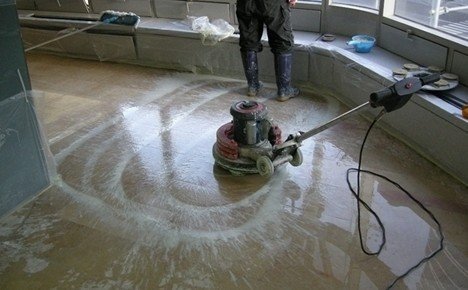
With the development of economy, stone has been widely used and become increasingly popular. With time going by, stone aging and pollution problems will arise. Sometimes stone has to be retreaded by grinding.
With the development of economy, stone has been widely used and become increasingly popular. With time going by, stone aging and pollution problems will arise. These problems can be solved initially by clean-keeping, but sometimes stone has to be retreaded by grinding. Following is an introduction to abrasives and abrasive products.

1. Abrasives and Abrasive Products
Abrasives are the materials for grinding and processing. Abrasives can be divided into ordinary abrasives and superhard abrasives. The former includes fused alumina (brown fused alumina, white fused alumina, etc.), the major chemical composition is Al2O3; silicon carbide (black silicon carbide, green silicon carbide, etc.), its major chemical composition is Sic. The hardness of brown fused alumina, white fused alumina, black silicon carbide, and green silicon carbide is respectively 2000mm to 2200mm per kilogram force, 2200mm to 2300mm per kilogram force, 3100mm to 3300mm per kilogram force, and 3200mm to 3400mm per kilogram force. In terms of hardness, green silicon carbide and black silicon carbide are usually used to process granite; soft white fused alumina, hard black silicon carbide and green silicon carbide are for marble processing. These abrasives can be made into inorganic abrasive products, such as magnesia tools and ceramic tools. Organic abrasive products include phenolic tools, unsaturated polyester resin abrasive products, and epoxy resin abrasive products (including abrasive cloth and abrasive paper).
Diamond belongs to superhard abrasive. Though it has a long history, it is a most popular cutting tool in recent three decades. Its micro hardness is 8000mm per kilogram force and has a high working efficiency that is five times compared to ordinary abrasives. Diamond tools include metal tools, resin tools, ceramic tools, divided by different bonding agents. Resin diamond tools are low in cost so they are widely used in rough grinding and polishing, the biggest advantage being fine polishing. While ceramic diamond tools are rarely used in stone maintenance due to high costs.
2. Procedures of Stone Maintenance
There are four procedures of stone maintenance. Firstly, using coarse grinding tools to make the scathing surface flat. Usually the process contains certain removal rate. Secondly, using coarse grinding tools to grind the stone and remove the coarse lines during processing. The workpiece's surface should also be kept flat. Thirdly, fine grinding process, during which the removal rate is slight and the stone's degree of finish can reach the polishing standard. At last, the polishing process, which is the requirement of stone maintenance.
3. Choice of Abrasive Products
Magnesia grinding stone is formed by polymerization of silicon carbide abrasive and magnesium oxide. Green silicon carbide is better. Black silicon carbide is inexpensive, the grit size is generally 16#--1200#. The grindstone varies from hard to soft correspondingly. Black silicon carbide has a good self-sharpening action, it can process graphite, marble, artificial stone, and ceramic tiles. But the efficiency is low and the grinding bit needs huge pressure during working.
Silicon carbide resin grindstone is formed by bonded compound of silicon carbide and resin. It is major used in fine grinding and has a durability, which is especially true when it comes to marble processing. Phenolic grindstone is prone to dye while polishing light-colored stone, which is the reason why it cannot be used substantially. Mix Ultra-fine silicon carbide micro powder with resin and other materials to form the grindstone that can be used in granite, terrazzo, and concrete polishing.
Ceramic grindstone is formed by mixing silicon carbide and vitric, and sintering. Its features are good durability but easy to be blocked and the cost is high.
Metal bonded grinding disc is formed by sintered diamond and metal powder. Its features are high processing efficiency and good processing result. Usually the choice of grit size is from 50# to 20#. Metal bonded grinding disc is the most effective tool used to dress rough surface.
Resin bonded grinding disc is formed by bonded diamond single crystal, diamond powder, and resin. Mainly used in fine grinding and polishing of stone, its cost is lower than metal and it has a high processing efficiency.
Diamond polishing pad is a new tool for floor renovation. Its portability and unique flexibility make it a good choice for floor renovation. Usually this kind of product can protect the stone surface effectively and is easy to handle.
Author: Liwei Chu
Copyright: iAbrasive.com--Abrasives & Diamond Tools Market